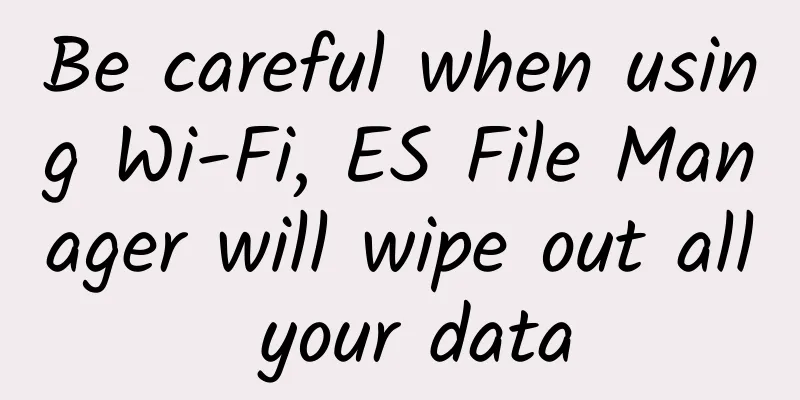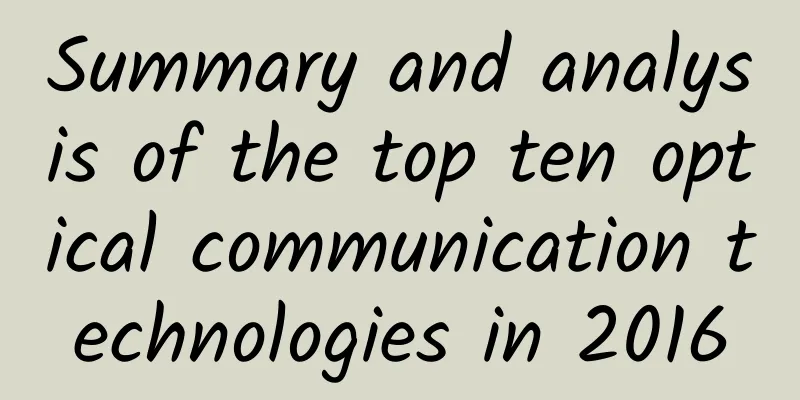Be careful when using Wi-Fi, ES File Manager will wipe out all your data

|
If you use the popular file explorer app ES FileExplorer on any Android smartphone or tablet, be careful: a French security researcher, BaptisteRobert, has discovered a vulnerability in the app (tracked as CVE-2019-6447) that could allow hackers to access sensitive information on the device. He says the vulnerability exists in versions 4.1.9.7.4 and lower of the app. French cybersecurity researcher Baptiste Robert (Twitter: @fs0c131y) ES File Explorer ES File Explorer has a huge user base, with more than 100 million installations on the Google Play Store and more than 400 million downloads worldwide since 2014. It is a very convenient, fast and efficient Android file management application. The application is so popular because it is completely free and includes an option to upgrade to ES FileManager Pro, which removes ads and provides new functional options. At the same time, this may mean that there are many vulnerable devices. Local network vulnerability allows hackers to steal data According to French cybersecurity researcher Baptiste Robert (Twitter: @fs0c131y), who goes by the handle ElliotAlderson on some online forums, the ES File Explorer app may include a small hidden web server running in the background. Although Robert is not entirely sure why the web server exists (he thinks it may have something to do with using an HTTP server on port 59777 to stream videos to other apps), he still concludes that the user's device is thus exposed to anyone on the local network, and any hacker on the same network as the infected device can use the open port connected to the web server to gain access to the device. And use that port to inject a JSON malicious payload. Once hackers gain access, they can theoretically extract any file from a user's Android device, including photos, videos, text files, etc., and transfer them between hacker-infected devices. At the same time, hackers can also remotely launch various applications on infected devices. Types of data that hackers can steal:
Although this vulnerability does exist, hackers must meet a prerequisite to launch an attack, that is, they must be in the same network as the victim user, such as connecting to the same Wi-Fi network. In other words, when users use private networks at home, this threat is not very serious. But if they are in public places, such as airports, coffee shops, libraries, etc., and use public networks, then the risk will increase exponentially. Robert developed a proof-of-concept script to retrieve data from Android devices and SD cards running ES FileExplorer on the local network, as shown in the following figure:
Another local vulnerability can be used for man-in-the-middle attacks About four hours after Robert disclosed the CVE-2019-6447 open port vulnerability, Lukas Stefanko, an Android malware researcher at ESET, discovered another local vulnerability in ES File Explorer. Potential attackers can use a man-in-the-middle (MitM) attack to intercept the application's HTTP network traffic and switch it with their own. Stefanko also said that all ES File Explorer versions v4.1.9.7.4 and below are affected by this MitM security vulnerability. When the researchers contacted ES App Group, the developer of ES File Explorer, and reported the vulnerability, ES App Group apologized for the vulnerability. At the same time, the company said it has started to fix the vulnerability. However, the new version is still awaiting approval, so it may take several days to be available on the Google Play Store. |
>>: Ruijie Smart Town E-Day Tour
Recommend
Enterprises need to prioritize mobile unified communications
The need for secure, reliable, and easy-to-use co...
HostYun: AMD5950X Australian VPS monthly payment starts from 31 yuan
HostYun is a long-established VPS hosting company...
The Current State and Future of IoT Connectivity
In every sense, the Internet of Things is about c...
Zheye IO year-end promotion: 30% off all cloud servers + free memory, 200 yuan off for independent servers, 300 yuan free for 1,000 yuan recharge
ZheyeIO has released a 2020 year-end promotion pl...
Huawei Cloud Online Education Innovation Season kicks off to light up the dream classroom with technology
[51CTO.com original article] Is it a crisis or an...
Watch Process Little P tell its network performance story!
[[394922]] This article is reprinted from the WeC...
Eight facts about data center design and construction
This article points out eight facts in data cente...
Several steps and tools for troubleshooting the network
Let me ask a question first. If one day you sudde...
CloudCone: Premium SC2 Black Friday pre-sale price starting at $32.94/year, free snapshot backup, Los Angeles data center
Last week we shared CloudCone's VPS hosting B...
5 false truths about 5G mobile phones, don't be fooled anymore
[[360004]] Although some things are real, they ar...
[Black Friday] Sharktech High-Defense VPS 50% off, $47.7/year-2GB/40GB/4TB/Los Angeles and other data centers
Sharktech offers special discounts for VPS hosts ...
LiFi looks good, but it is difficult to pass the market test
10 days ago, pureLifi raised $18 million in Serie...
SASE vs. SD-WAN: Which one do you pick?
SASE (Secure Access Service Edge) and SD-WAN are ...
The 18th China Enterprise Annual Selection List for 2023 was announced: Huawei OptiXstar T602E Compact Industrial Optical Terminal won the 2023 Media Recommended Product Award
In November 2023 , the " China Enterprise &q...
edgeNAT: US/Hong Kong/Korea VPS monthly payment 20% off, annual payment 30% off, starting from 48 yuan/month, top up 500 yuan and get 100 yuan
edgeNAT has released the latest promotion for Aug...









